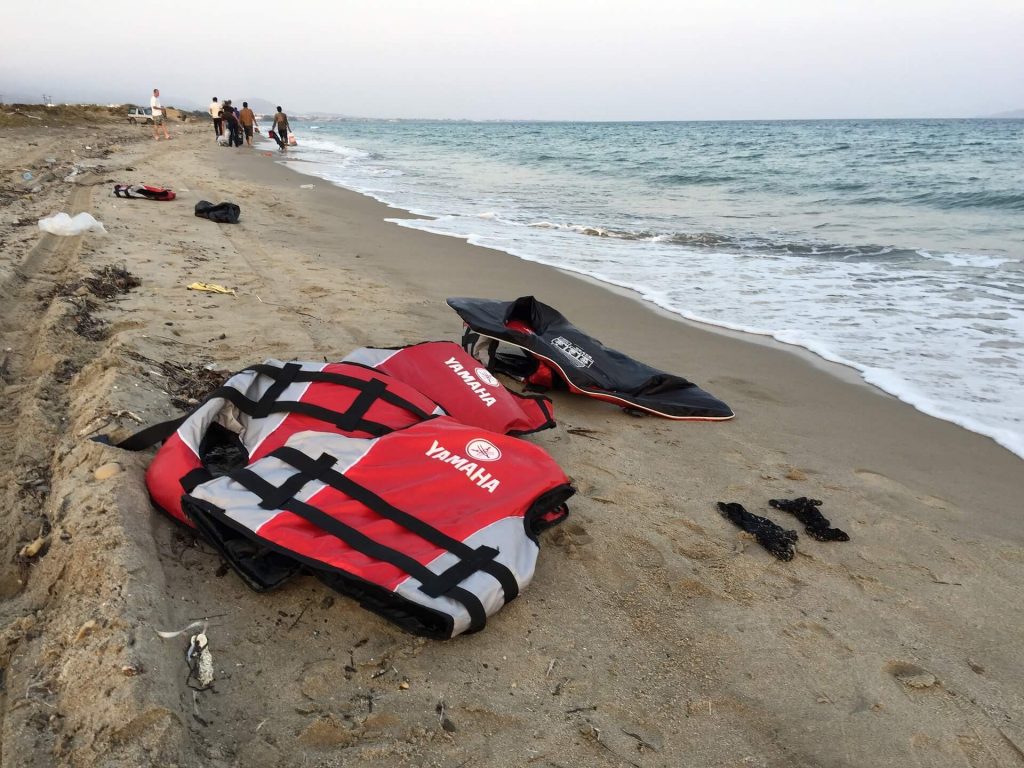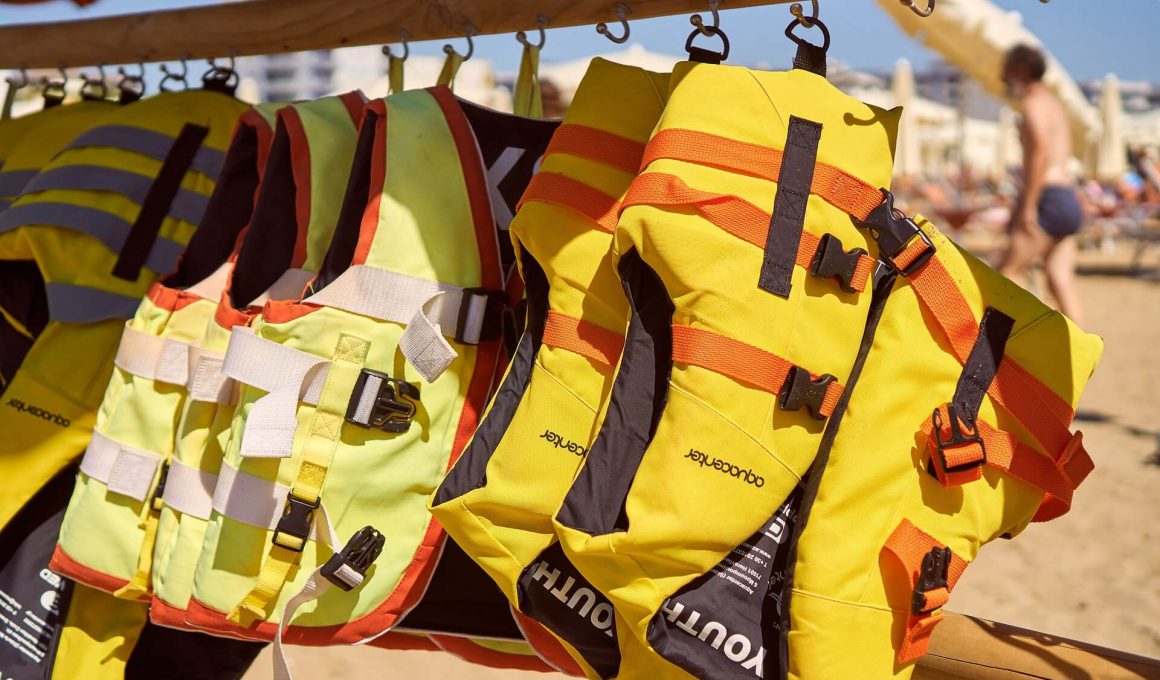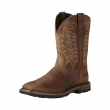Workwear Guru is reader-supported. When you buy through links on our site, we may earn an affiliate commission. Learn more
We all mostly remember them from our childhood going to the sea and not feeling confident around water simply because we could not swim, but also that there was the life jacket to make our swimming experience pleasant. However, knowing how to swim does not necessarily mean you do not need a life jacket. Drowning occurrences account for more than two-thirds of all boating fatalities, so it is always recommended to wear one to keep yourself safe when in water. If you are interested in knowing more about how life jackets work, when and how to wear them, and many more, this article is for you.
What Is a Life Jacket?
A life jacket, also known as PFD (personal flotation device), life preserver, life vest, lifesaver, life belt, cork jacket, buoyancy aid, or even flotation suit, is a flotation device worn by a user to prevent drowning in water. The gadget keeps the wearer afloat by keeping one’s head and mouth above the water’s surface; they do not need to swim or tread water to stay afloat, and often time the wearers may even be unconscious.
The usage of life jackets
All life jackets are designed to activate when you fall into the water. Mouth tubes are included in jackets, allowing you to inflate them orally. Manually inflating single-chamber jackets is also possible by pulling on the lanyard linked to them.
The safety light on your life jacket is a sealed water-activated battery device. When a ripcord is pulled to remove the seals, and the operational cell is submerged in water, it turns on the light bulb.
How Do Life Jackets Work?
Life jackets work considering the principle of buoyancy, which states that an object’s weight is equal to the amount of water it displaces. This means that when a person is submerged, the buoyant force produced equals the person’s weight. On the other hand, a life jacket is made of a lightweight material that weighs significantly less than the average human weight density. As a result, when a person wears a life jacket, the overall weight displaced by the water is far less than the person’s weight alone, and the person floats.
The buoyant force
The upward force on an item is known as the buoyant force. Sometimes people imply that the volume in the buoyancy formula refers to the volume of the displaced fluid (or the object’s submerged volume). However, it relates to the entire volume of the object. The concept that buoyant force equals the weight of the displaced is known as Archimedes’ Principle.
Some people believe the buoyant force increases when an object is transported deeper into the water. However, the buoyant force is independent of depth. It is solely determined by the volume of the displaced fluid, its density, and the acceleration due to gravity.
Coast Guard Regulation on Life Jackets

If you have not had the chance to notice, certain life jackets feature a new label on the inside. These unique labels appear on all new life jackets that are Coast Guard approved and available for purchase in the United States. It’s all part of a larger attempt to make finding the right life jacket for you and your intended on-water activity a little easier. This new labeling method is also known as life jacket label harmonization, and it aims to make life jackets more widely recognized and accepted, particularly in Canada and Europe. The idea is to make the labels reader-friendly by using fewer words and more icons. As this varies in different countries, checking within the Coast Guard Regulation is always advisable.
Types of life jackets
Personal flotation devices are available in various styles, and you should pick the one that best suits your activity or boat conditions.
Type I jackets are meant for offshore use and have the most buoyancy (over 20 pounds). They’re cumbersome to wear, but they offer the advantage of turning an unconscious person face-up in the water.
Type II life jackets are commonly used for nearshore boating excursions. They have long been popular among sailors trying to use the US Coast Guard safety criteria due to their low cost and simple design. They have a minimum buoyancy of 15.5 pounds, and they can be used with unconscious persons turned face-up in the water.
Type III jackets provide 15.5 pounds of buoyancy as well. The pleasant-form-fitting shape of “ski vests” makes them a good choice for watersports and ordinary users. Jackets of this type usually have a front entry with a buckle or a buckle-and-zipper closure. Type III jackets are designed for aware users with a good possibility of being rescued. Type III jacket does not guarantee to turn an unconscious wearer face-up in the water.
Type IV personal flotation devices are known as “throwables” and usually come in a ring form or a flat cushion that you can throw into someone who falls into the water unexpectedly. Type IV PDFs are intended to be handled rather than worn by the user. They have a minimum buoyancy of 16.5 pounds.
Type V jackets are multi-purpose PFDs frequently incorporated into flotation coats, whitewater rafting vests, and even sailboard harnesses. It would be best if you only used them for the purpose for which they were created.
Testing and Maintaining a Life Jacket

To make sure the life jacket fits, try it out in shallow water. The life jacket should stay in position and not ride up when properly attached. Picking up a youngster by the shoulders of the jacket allows you to check the fit of a child’s flotation gear.
It’s also a good idea to measure the freeboard of a life jacket in somewhat deeper water. The gap between the water’s surface and the bottom of the user’s mouth is known as a freeboard. The freeboard will be higher with more buoyancy. A more significant amount of freeboard will make it simpler to keep your head above water in rough seas with solid waves.
Every year, you should check your life jacket and see if it still fits you correctly and if there are any signs of aging, such as fading or tearing. The foam will degrade or, in the case of a hole or rip, fall out of the jacket as it ages.
Life jackets are not indestructible, but basic maintenance and good care will ensure they function effectively as long as you own them. It would be best if you kept the life jacket somewhere well ventilated. Most life jackets can be washed by hand in a moderate detergent and then allowed to air dry. Dry cleaning a life jacket can cause the foam to deteriorate due to the chemicals and heat.
Extreme heat, such as that generated by clothes dryers, should be avoided when taking care of a life jacket because it will hasten the dissolution of the foam. It’s not good to leave life jackets out in the sun.
The Must-To-Do List
- Check the inside label of the life jacket to ensure it is US Coast Guard approved. The label should be legible and clear.
- Ensure all zippers, straps, buckles, and other fasteners are intact and work properly.
- Ensure there are no rips, tears, or mold on the life jacket.
- Check the size and thickness of the life jacket and the style suitable for your activity.
- Check whether the life jacket flotation foam is not damaged, and make sure the life jacket will float when placed in water.
- Test your life jacket underwater to see whether there are any holes.
- Do not forget to wear one.
Choose the right life jacket

Life jackets come in a wide range of styles, colors, and sizes. Many of them are light and stretchy. Some are incorporated directly into fishing vests or hunter coats. Others are as little as a scarf or fanny pack until they come into contact with water, at which point they immediately fill with air.
Most of the life jackets found in the market are standard non-inflatable. An inflatable life jacket may be the best option depending on your circumstances. You can’t go wrong with a regular PFD, but you could discover that an inflatable one is more suitable for your needs.
Your chest size determines adult sizing, and you want a snug but comfortable fit. When shopping, consider features like pockets, color, and tabs and specifications like flotation and US Coast Guard Type.
Check for a proper fit
Once you’ve decided on the right life jacket for your situation and activity, make sure it’s in good shape, free of holes and tears, and fits appropriately. A jacket that might be too big for the wearer may fall off. A too-small PFD may not provide enough buoyancy to keep the swimmer afloat.
Look for manufacturer’s labeling that specifies the jacket’s appropriate size and weight. Put the jacket on, fasten any closures (buckles, zippers), raise your arms straight over your head and ask a buddy to grip the top of the life jacket over the arm openings and draw upward. Make sure the jacket does not rise higher than the wearer’s chin in the ideal situation.
Don’t forget to wear it
As you consider what life jacket is suitable for you, please remember that the most important thing about life jackets is simply to wear one. 90% of boating-related drownings can be prevented by wearing a life jacket. Therefore, no matter how good a swimmer or confident you are, do not forget to wear a life jacket.
Final Thought
Now that you have become familiar with life jackets, their types, and how to use them, you must be ready for some water adventure, by the river or sea, enjoying your swimming or any other water sport or activity. Go get your life jacket and do not miss the fun.











